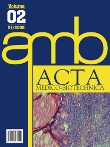Prispevek Slovenije na področju medicinskih raziskav / Slovenia’s contribution to world medical research
Abstract
Until now, despite anecdotal evidence that Slovenian doctors contribute significantly to the world’s medical research, the size, breadth and importance of our contribution has not been formally investigated. We decided to evaluate Slovenia’s medical research output from the time of its independence (1991-2009).
We used an online database from the Institute for Scientific Information (ISI) to access journal articles belong to the ISI category “medicine” and published between January 1991 and February 2009. The number of articles with authors listing an affiliation with a Slovenian institution was determined for the articles as a whole and separately for each specific medical field and for each journal. We covered 41 different medical fields and 2.114 journals. The impact factors of the journals ranged from 0.02 to 69.03.
The goal was to evaluate Slovenia’s relative contribution, quantitatively and qualitatively. Slovenia, with 2 million inhabitants, represents only 0.03% of the world’s population, and we expected that the size of Slovenia’s contribution would correlate with this.
7.333.462 articles were identified of which 6520 (0.09%) were from Slovenia. In some fields, Slovenia’s contribution was very high. The largest contribution was to medical informatics (0.48%), followed by legal medicine (0.26%), andrology (0.22%), physiology (0.198%), emergency medicine (0.16), obstetrics and gynaecology (0.15%), anatomy (0.14%) and oncology (0.14%). %). The lowest contribution was to tropical medicine (0.009%) followed by geriatrics (0.016%) and gastroenterology (0.029%).
Of the 6.529 Slovenian publications, the greatest number were in the field of oncology (662 articles, 10.2% of Slovenia’s output), followed by clinical neurology (445 articles, 6.8%) and surgery (400 articles, 6.1%), and the smallest number were in tropical medicine (3 articles, 0.009%).
Only 2 journals published more than 100 Slovenian research papers during this period, both in the German language. One journal covered general medicine (183 articles) and the other physiology (177 articles). Only 5 journals published more than 50 articles from Slovenia and these covered the fields of neurology (69 articles), haematology (66 articles), obstetrics and gynaecology (60 articles), oncology (55 articles) and general medicine (52 articles). These languages were English, German or Croatian.
656 of the 6.529 articles (10.06%) were published in journals with impact factors more than 5 considered the year 2007.
Medical research is important to local researchers and to government, particularly the Ministry of Higher Education, Science and Technology and the Ministry of Health.
Slovenia’s world contribution to basic medical science journals, journals from specific medical fields, and general medicine journals, as judged from the numbers of articles published in high-quality journals, different greatly depending on the area of medicine and ranged from as low as 0.009% (tropical medicine) to as high as 0.48% (medical informatics).
We are aware that our analysis does not include the entire contribution of Slovenia to world medical research; nevertheless, it provides broad information about our role on the world stage and in which fields our contributions are greatest. This is the first time such information has been published.
The number of publications in the ISI database provides only a gross estimation of the proportion of Slovenia’s research contribution. The absolutenumber of high-quality journals articles originating from Slovenia is certainly different from the present findings. Nevertheless, we have no reason to believe the figures do not broadly reflect Slovenia’s actual contribution.
We did not look at trends in the contribution rates over time or look for connections between the number of publication and the number of research projects or whether the articles were generated by government-funded or European-founded research. It would be interesting to consider these aspects.
High-quality medical research requires support, for example, with biostatistics expertise and sufficient funds. Research questions must be relevant and appropriate and ethically-acceptable methodologies must be used. It is the personal opinion of the authors that university students should be exposed to research early in their degrees and that government must foster a strong research culture and actively evaluated factors that impact, positively or negatively, on Slovenia’s medical research output and act accordingly.
In conclusion, Slovenia’s contribution to the world body of medical research is satisfactory in terms of the number of publications. Further research is required to ascertain why Slovenia’s research output in certain areas of medicine is less than in other areas.
Dušica Pahor
Editor-in-chief
Downloads
Copyright (c) 2009 Acta Medico-Biotechnica

This work is licensed under a Creative Commons Attribution 4.0 International License.
